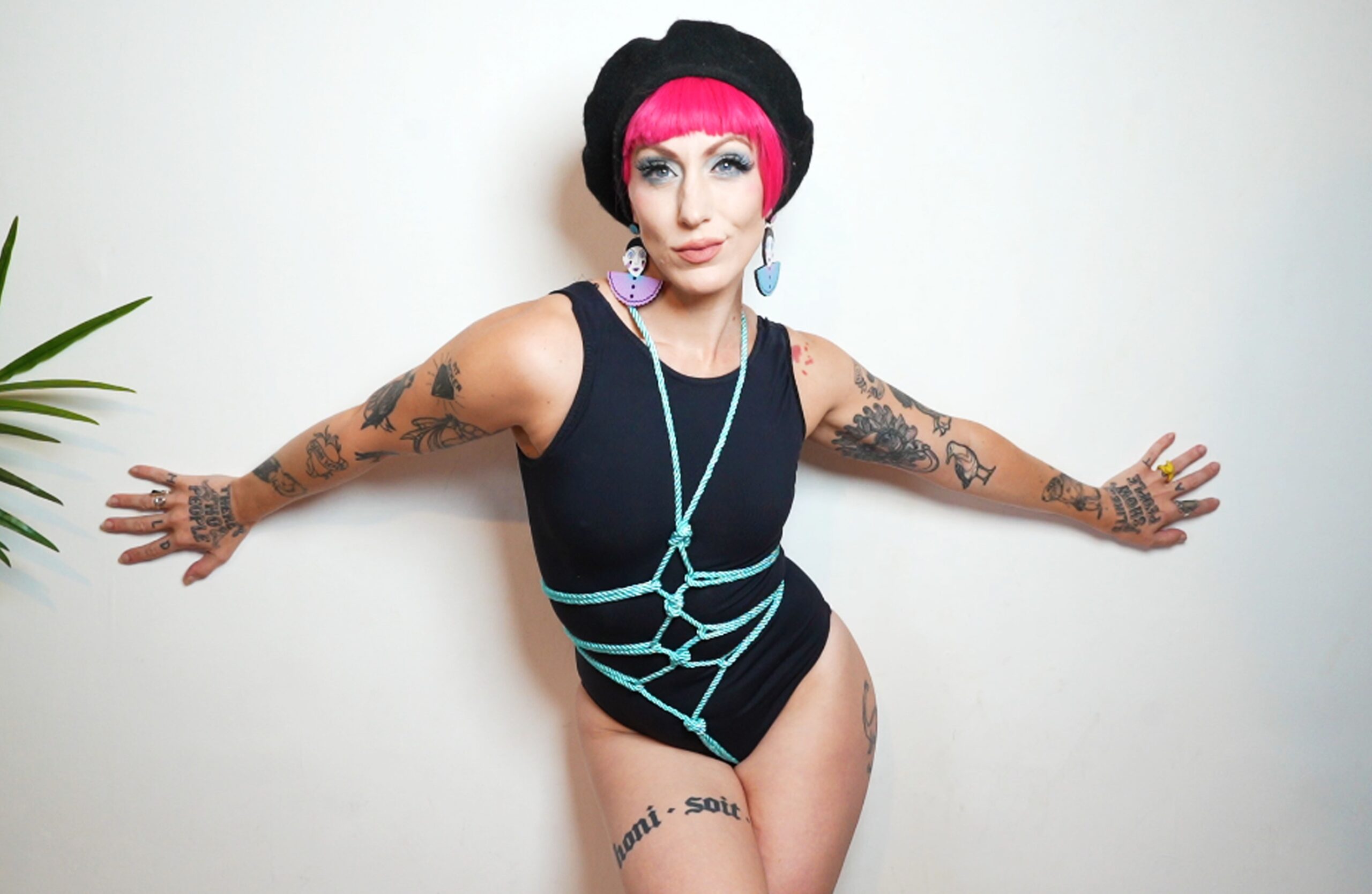The Truth About Open Relationships: How To, Rules, Do’s & Don’ts & FAQ

Getting Started with Open Relationships
Exploring non-traditional relationship structures can be both fascinating and intimidating, especially for those considering opening up their romantic relationships to others. With the increasing normalization of open relationships in modern society, many people are seeking guidance on how to navigate this complex landscape. The goal of an open relationship is not solely to add variety or excitement to a partnership, but also to foster honesty, trust, and communication among all parties involved.
Understanding the Basics
An open relationship is a type of romantic partnership where all parties involved are aware and agree to participate in intimate relationships with others outside of the primary partnership. This does not necessarily mean that one person is free to sleep with anyone they want, but rather that they have given consent for their partner(s) to do so.
Getting started with an open relationship requires a lot of communication, trust, and emotional maturity. It’s essential to have open and honest discussions about boundaries, desires, and expectations before entering into an open arrangement. This includes discussing what is and isn’t acceptable in the relationship, how jealousy will be addressed, and what kind of commitment each partner is looking for.

It’s also crucial to establish clear rules and guidelines that work for everyone involved. These can include agreements about physical intimacy, emotional boundaries, and frequency of check-ins with other partners. While there are no one-size-fits-all solutions, creating a shared understanding of what works and what doesn’t can help prevent misunderstandings and hurt feelings.
In an open relationship, each partner is still responsible for their own emotions and actions, just as they would in any other type of romantic partnership. This means that conflicts, jealousy, or feelings of insecurity are not unique to non-monogamous relationships but are universal human experiences that require effort to navigate.
Benefits of Open Relationships
Emotional Benefits
Emotional benefits are perhaps the most significant advantages of open relationships. When both partners are on the same page and communicate openly about their desires and boundaries, they can foster a deeper sense of trust and intimacy. This allows for a more authentic expression of emotions, free from the constraints of monogamy.
In an open relationship, partners have the freedom to explore their feelings and desires without fear of judgment or rejection. This can lead to a greater understanding of themselves and their partner’s emotional needs, resulting in a stronger and more resilient connection. wide girth toy By sharing their emotions openly, partners can develop a sense of mutual support and validation, which can be incredibly empowering.
Another emotional benefit of open relationships is the reduction of jealousy and possessiveness. When both partners are aware of each other’s desires and activities outside of the relationship, they are less likely to experience feelings of insecurity or competition. This allows for a greater sense of emotional freedom and autonomy, which can lead to a more fulfilling and enjoyable partnership.
Additionally, open relationships can provide a safe space for individuals to explore their own emotional needs and desires. By having an open conversation about their emotions with their partner, they can gain a deeper understanding of themselves and what they want from the relationship. This self-awareness can lead to greater emotional intelligence, personal growth, and a more authentic expression of themselves.
Benefits of Open Relationships
Open relationships have long been stigmatized and misunderstood, often viewed as taboo or unconventional. However, for those who are interested in exploring non-monogamous arrangements, understanding the benefits and realities of open relationships can be a game-changer.
In an open relationship, partners agree to engage in romantic and/or physical connections with others, outside of their primary partnership. This can provide numerous benefits, including increased intimacy, emotional depth, and personal growth. Open relationships also foster trust, communication, and empathy among all parties involved.
Practical Benefits
One of the most significant benefits of open relationships is that they can bring about greater emotional fulfillment and intimacy for all parties involved. By allowing individuals to explore their desires and connect with others outside of their primary relationship, open relationships can lead to a deeper sense of connection and understanding within the partnership.
Practically speaking, open relationships can also offer several benefits in terms of personal growth and self-discovery. For example, by being open to exploring romantic or physical connections with others, individuals may gain a better understanding of their own desires, boundaries, and needs. This increased self-awareness can lead to greater personal growth and a more fulfilling life.
Another benefit of open relationships is that they can reduce the risk of codependency and emotional attachment within a single partnership. By allowing for multiple connections outside of the primary relationship, individuals can maintain healthy boundaries and avoid becoming overly reliant on one person for emotional validation or intimacy.
Additionally, open relationships can provide a sense of freedom and flexibility in a partner’s life. This can be particularly beneficial for individuals who value independence and autonomy, as well as those who are looking to add variety and excitement to their romantic lives.
Of course, it’s worth noting that open relationships require careful communication, mutual respect, and trust among all parties involved. By prioritizing these essential qualities, individuals can create a healthy and fulfilling arrangement that works for everyone.
Navigating the Rules of Open Relationships
The Importance of Communication
Navigating the rules of open relationships can be complex and emotionally charged. At its core, an open relationship involves having multiple romantic connections with the knowledge and consent of all parties involved. While it may seem liberating to have more freedom in one’s love life, it requires a tremendous amount of effort, commitment, and communication from everyone involved.
Effective communication is key to making open relationships work. This includes regular check-ins with your partner(s), honesty about your feelings, needs, and boundaries, as well as being transparent about your interactions with others. Establishing clear boundaries and guidelines can also help prevent misunderstandings and conflicts. However, it’s essential to remember that open relationships are not a one-size-fits-all solution – what works for one couple may not work for another.

A fundamental principle of open relationships is respect for each other’s autonomy and agency. This means recognizing that everyone has their own needs, desires, and values, and being mindful of these differences. female condoms It also involves being willing to compromise and find mutually acceptable solutions that work for all parties involved. By prioritizing trust, honesty, and communication, individuals can build strong, healthy relationships within the open relationship framework.

It’s also crucial to acknowledge that open relationships carry inherent risks, such as emotional attachment to multiple partners or conflicts of interest. To mitigate these risks, it’s essential to establish a strong foundation of mutual respect, trust, and understanding among all parties involved. By doing so, individuals can navigate the complexities of open relationships with greater ease and confidence.
Navigating the Rules of Open Relationships
Navigating the rules of open relationships can be a daunting task for those who are considering or already in an open arrangement. With the stigma surrounding non-monogamy slowly fading, more and more people are exploring the benefits of multiple partners, intimacy, and connection. However, with great freedom comes great responsibility, and successfully navigating open relationships requires a deep understanding of its rules, boundaries, and expectations.
Setting Boundaries and Guidelines
Navigating the rules of an open relationship can be complex and challenging, but it can also be incredibly rewarding for all parties involved. At its core, an open relationship involves a commitment from all participants to be honest, transparent, and respectful of each other’s needs and boundaries. Setting clear guidelines and boundaries is essential in any open relationship, as it helps prevent misunderstandings and ensures that everyone feels seen, heard, and valued.
One key aspect of successful open relationships is communication. Partners must have open and honest conversations about their desires, needs, and expectations. This includes discussing what each person is comfortable with, what they are not, and what their deal-breakers are. It’s also essential to establish a system for managing interactions between partners when they’re together or apart, such as setting boundaries around jealousy, possessiveness, and attention-sharing.
Another crucial aspect of navigating open relationships is creating guidelines that work for everyone involved. This might include rules about where or how often partners can interact with others outside of the relationship, what forms of intimacy are acceptable, and how conflicts should be resolved. Having a clear plan in place helps prevent feelings of resentment and mistrust, which can be major pitfalls in open relationships.
Rules and guidelines will vary depending on individuals, but common themes include consent, respect for partners’ time and energy, and a commitment to honesty and transparency. Setting boundaries also allows partners to prioritize their own needs and desires, rather than feeling pressured to constantly fulfill someone else’s expectations.

A successful open relationship requires effort, commitment, and a willingness to adapt and grow together. By prioritizing communication, setting clear guidelines, and respecting each other’s boundaries, partners can build trust, intimacy, and a deeper understanding of one another’s needs.
Navigating the Rules of Open Relationships
Navigating the world of open relationships can be a complex and sensitive issue, especially when it comes to establishing clear boundaries and navigating the rules that govern this non-traditional form of intimacy. As the stigma surrounding open relationships decreases, more people are exploring the benefits of these arrangements, but with the freedom comes a multitude of questions and concerns. From communication and consent to jealousy and commitment, the guidelines for making an open relationship work are often unclear. In this article, we’ll delve into the ins and outs of navigating the rules of open relationships, providing you with the tools and insights needed to navigate this unconventional path with confidence.
Handling Conflicts and Challenges
Navigating the rules of open relationships can be complex and delicate, requiring open communication, trust, and mutual respect among all parties involved. At its core, an open relationship is a voluntary agreement between partners to include or engage with others outside of their primary relationship. This arrangement can take many forms, from polyamory to non-monogamy, and each has its own set of rules and guidelines.
Establishing clear boundaries and expectations is key to the success of an open relationship. This includes discussing what types of relationships are acceptable, how often interactions with others will occur, and what measures will be taken to maintain emotional connection and intimacy within the primary relationship. It’s also crucial to define what constitutes cheating, as this can vary depending on individual definitions and cultural norms.
Handling conflicts and challenges is a vital aspect of navigating open relationships. Disagreements can arise when one partner feels insecure or threatened by the presence of others, leading to feelings of jealousy or possessiveness. In such cases, communication and empathy are essential in addressing these concerns and finding solutions that work for all parties involved.
Furthermore, conflicts may also arise due to differing opinions on what constitutes a “primary relationship” versus other relationships. It’s vital to establish a clear understanding of what each partner values and prioritizes in the arrangement.
Conflict resolution strategies should prioritize active listening, empathy, and open communication. This includes setting aside dedicated time for discussion, creating a safe space for expressing feelings and concerns, and working together to find mutually beneficial solutions. It’s also essential to acknowledge that conflicts are inevitable and that growth and improvement can arise from navigating these challenges.
Ultimately, the success of an open relationship depends on each individual’s capacity for self-reflection, emotional regulation, and adaptability. By embracing honesty, trust, and mutual respect, partners can foster a dynamic environment that acknowledges the complexity of human emotions and desires.
Frequently Asked Questions
Living in an open relationship can be a complex and intimate experience for couples who choose to navigate their desires, boundaries, and emotions openly with each other and potentially others. With the rise of non-monogamy and alternative relationship structures, many people are curious about what it takes to make an open relationship work and how to navigate its unique challenges.
Q: Is an open relationship for me?
An open relationship can be a complex and personal choice that depends on individual circumstances, values, and preferences.
It’s essential to consider whether an open relationship aligns with your own needs, boundaries, and goals in a partnership. Ask yourself: Are you comfortable with the idea of being intimate or physically affectionate with others outside of your primary relationship? Can you trust your partner with honesty and transparency about their interactions with others?
Reflecting on these questions can help you determine whether an open relationship is right for you. It’s also crucial to discuss and agree upon the terms, rules, and expectations with your partner beforehand. This will ensure that both partners are on the same page and can navigate the potential challenges that come with an open arrangement.
Ultimately, the decision to pursue an open relationship should be based on mutual respect, trust, and a deep understanding of what it means for each individual involved.
Q: How do I communicate effectively in an open relationship?
Effective communication is key in any relationship, and even more so in an open one. In an open relationship, both partners have agreed to be non-monogamous and may engage in multiple relationships or activities outside of their primary partnership. Good communication helps build trust and understanding between partners.
Establishing clear boundaries and expectations from the start is crucial for a successful open relationship. This includes discussing what kind of communication works best for each partner, how often and how to check-in with one another, and what constitutes a breach of those boundaries. leather bondage lingerie Regular, honest, and respectful communication can help prevent misunderstandings and conflicts.
One way to communicate effectively is by using “I” statements instead of “you” statements, which can come across as accusatory. For example, saying “I feel hurt when you spend the weekend with Sarah without telling me” rather than “You always spend the weekends with Sarah and never mention it to me”. This approach allows each partner to express their feelings and needs without becoming defensive or critical.
Open communication also involves being transparent about one’s desires, boundaries, and feelings. Both partners should feel comfortable sharing their thoughts and emotions without fear of judgment or rejection. It’s essential to listen actively and try to see things from the other person’s perspective as well. By doing so, both partners can gain a deeper understanding of each other’s needs and desires.
Another aspect of effective communication in open relationships is being respectful of each other’s time and attention. Both partners should prioritize their primary relationship and make time for regular dates and check-ins with one another. This helps prevent feelings of resentment or jealousy that can arise when one partner feels neglected or unheard.
Q: What are some common mistakes to avoid in an open relationship?
Mistakes can have serious consequences in an open relationship, leading to hurt feelings, damaged trust and potentially even the end of the relationship altogether.
One common mistake to avoid is being dishonest or secretive about one’s interactions with others outside of the primary relationship. This can include not disclosing information about dates, encounters, or conversations with other partners, which can lead to feelings of mistrust and betrayal.
Another mistake to watch out for is not establishing clear boundaries or guidelines with your partner(s). Without open and honest communication about what is and isn’t acceptable behavior, conflicts can arise and relationships can become strained.
Additionally, not respecting the autonomy and individual needs of each partner within the relationship can be a major misstep. This can include not taking into account personal boundaries, desires, or emotional needs when engaging in non-monogamous activities.
Another pitfall to avoid is neglecting to prioritize communication and conflict resolution within the primary relationship. When conflicts arise between partners, it’s essential to address them in a healthy and constructive manner, rather than avoiding or dismissing them.
Q: Can an open relationship work for me in the long term?
An open relationship can be a viable option for some people in the long term, but it requires careful consideration, communication, and commitment from all parties involved.
The success of an open relationship depends on several factors, including individual personalities, emotional maturity, and the quality of communication between partners. training kits Some people thrive in non-monogamous relationships, while others may struggle with jealousy or insecurity.
To make an open relationship work long-term, it’s essential to establish clear boundaries, guidelines, and expectations with your partner. This includes discussing and agreeing on what constitutes “openness,” how often and with whom you’ll have sex outside of the relationship, and how you’ll handle feelings of jealousy or insecurity.
It’s also crucial to maintain a strong emotional connection with both partners, ensuring that everyone feels seen, heard, and validated. Regular communication, trust-building exercises, and conflict resolution strategies can help navigate the complexities of an open relationship.
A long-term open relationship requires ongoing effort and commitment from all parties. It’s not just about having sex or being physically intimate; it’s about building a strong, healthy relationship that meets each partner’s emotional and relational needs.
Ultimately, whether an open relationship can work in the long term depends on individual circumstances and the unique dynamics of each relationship. With careful consideration, open communication, and a willingness to navigate challenges together, some people may find that an open relationship is a fulfilling and sustainable choice for them.
Explore rabbit cock rings for intense stimulation at Peaches and Screams Explore Bondage Leather Restraints for thrilling BDSM play at Peaches and Screams Shop bedroom bondage kits for a complete experience at Peaches and Screams Buy prostate massagers for men at Peaches and Screams Shop Pharmaquests products for health-conscious and safe intimacy at Peaches and Screams Buy hollow butt plugs for unique sensations at Peaches and Screams Explore stimulating and warming condoms at Peaches and Screams
Raindrops and Ribbons Detailed Weddings LA Emily Patricia Fae Highland Spring Magazine
























